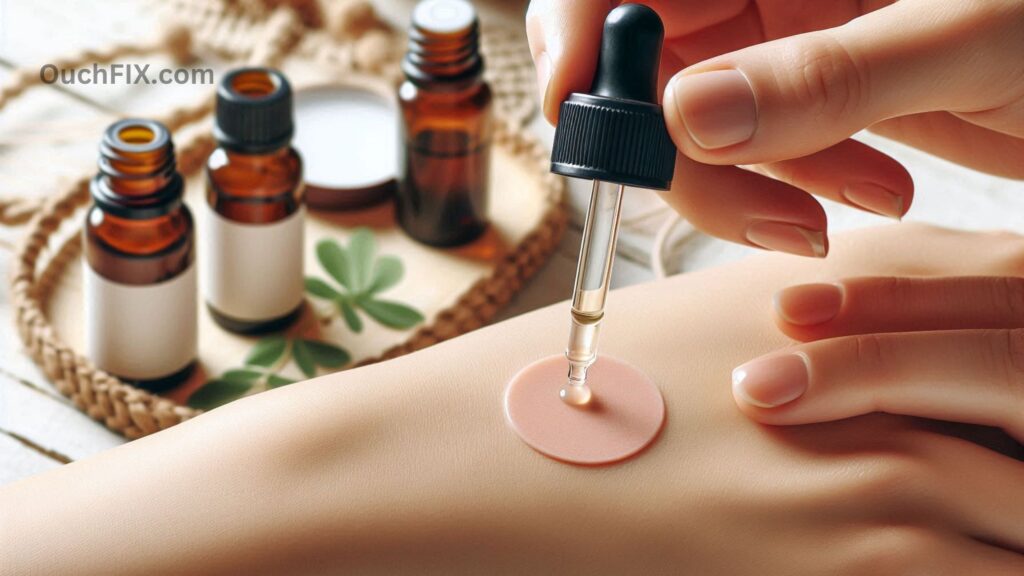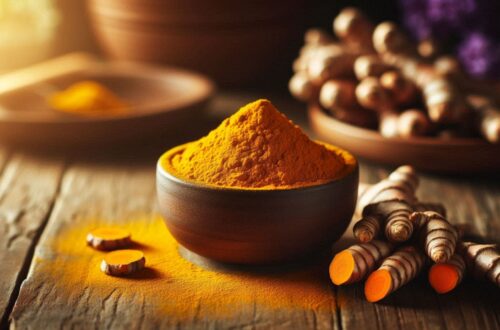Looking for a natural way to manage pain without always reaching for medication? Essential oils may be worth exploring. These concentrated plant extracts have been used for centuries to support physical, emotional, and mental well-being. Today, more people are turning to them as a complementary option for easing discomfort—whether it’s headaches, sore muscles, menstrual cramps, or chronic pain conditions.
But do essential oils really help with pain? And if so, which ones should you use? In this guide, we’ll take a closer look at the science, the most effective oils, and safe ways to add them to your routine.
Can essential oils help with pain?
Essential oils are highly concentrated extracts taken from flowers, bark, stems, roots, and other parts of plants, usually through steam distillation. Each oil has a unique chemical composition that gives it therapeutic properties.

Some studies suggest that certain essential oils may help with:
- Inflammation (a major cause of chronic pain)
- Headaches and migraines
- Depression and mood swings (often linked to chronic pain conditions)
- Sleep issues
- Respiratory discomfort
While research is still ongoing, many users report noticeable benefits. For most people, using essential oils alongside their existing pain management routine is considered safe. Still, it’s always best to check with your doctor before starting, especially if you have a medical condition.

Also Read: What are Safe Natural Remedies for Arthritis Pain?
A Closer Look at Some Popular Oils
Here’s a closer look at some of the most researched and widely used essential oils for managing different types of pain:

1. Lavender Oil
Lavender is one of the most versatile essential oils. Known for its calming scent, it may also help reduce pain and inflammation.
- A 2013 study found that children who inhaled lavender after tonsil surgery needed less acetaminophen.
- A 2015 study showed lavender could reduce pain and swelling almost as effectively as a prescription anti-inflammatory drug.
- Migraine sufferers also report relief by inhaling lavender oil during an attack.
👉 Best for: Migraines, muscle tension, stress-related pain.
2. Rose Oil
Rose oil is particularly beneficial for women experiencing menstrual cramps.
- Research suggests rose oil, used along with traditional treatments, can significantly reduce menstrual pain.
- It may also help ease discomfort from kidney stones.
👉 Best for: Menstrual cramps, abdominal pain.
3. Bergamot Oil
This citrus-scented oil has shown potential in managing nerve pain.
- Some studies suggest it may be especially helpful for neuropathic pain, which is often resistant to regular painkillers.
👉 Best for: Nerve pain, stress-induced discomfort.
4. Wintergreen & Peppermint Oil
Both oils are commonly used in topical pain-relief creams like Bengay and Icy Hot.
- Wintergreen contains methyl salicylate, a compound similar to aspirin, though research results are mixed.
- Peppermint has shown promise: peppermint tablets helped ease chest pain in one study, and menthol gel reduced migraine discomfort in another.
👉 Best for: Joint pain, sore muscles, migraines.
5. Rosemary Oil
Rosemary doesn’t just flavor your food—it may also ease pain.
- Research in both animals and humans suggests it can reduce pain, especially when paired with complementary therapies like acupressure.
👉 Best for: Arthritis, muscle soreness.
6. Eucalyptus Oil
This refreshing oil is often found in ointments and pain-relief creams.
- A 2021 animal study found eucalyptus oil reduced inflammation and pain in specific doses.
👉 Best for: Arthritis, respiratory-related chest pain.
7. Chamomile Oil
Chamomile isn’t just for tea—it also has pain-relieving benefits.
- In a study of people with osteoarthritis, chamomile oil helped reduce reliance on pain medication.
- Another trial found it eased symptoms of carpal tunnel syndrome after four weeks of use.
👉 Best for: Osteoarthritis, joint pain, carpal tunnel discomfort.
8. Clary Sage Oil
This oil may be particularly effective for women with menstrual pain.
- One study found that applying a cream with clary sage and other oils reduced the severity of cramps.
👉 Best for: Menstrual cramps, hormonal pain.
9. Ginger Oil
Known for its warming effect, ginger oil offers multiple benefits:
- It can reduce inflammation, block pain signals, and even support respiratory health.
- Some studies also suggest benefits for people with cancer-related pain.
👉 Best for: Muscle pain, arthritis, cancer-related discomfort.
10. Clove Oil
Clove oil has a long history in dental care.
- It contains eugenol, a natural numbing agent, which explains why it’s so effective for toothaches.
- It can also be applied topically for localized pain relief.
👉 Best for: Toothaches, localized pain spots.
11. Lemongrass Oil
This oil contains citral, a compound similar to aspirin.
- People with arthritis reported less pain after using lemongrass oil for 30 days.
- It may also help with migraines and stomach pain.
👉 Best for: Arthritis, migraines, stomach cramps.
12. Frankincense Oil
An ancient oil often used in traditional medicine.
- Animal studies suggest it may reduce inflammation and help with arthritis symptoms.
👉 Best for: Arthritis, inflammatory conditions.

Also Read: How can I Relieve Joint Pain at Home with Natural Ingredients?
Blended Oils Work Too
Sometimes, mixing oils enhances their benefits. Research shows:

- A 2012 study found that a blend of lavender, clary sage, and marjoram reduced menstrual pain.
- Another mix of cinnamon, clove, rose, and lavender helped ease premenstrual discomfort.
- Patients with terminal cancer experienced both pain relief and improved mood after hand massages with bergamot, lavender, and frankincense oils.
How to Use Essential Oils for Pain
There are several ways to safely use essential oils:

1. Massage
- Mix a few drops of essential oil with a carrier oil (like coconut, almond, or jojoba).
- Gently massage into sore muscles or joints.
- For best results, consider a professional aromatherapy massage.
2. Inhalation
- Use a diffuser to fill the room with the oil’s aroma.
- Or try the steam method:
- Fill a bowl with hot water.
- Add 3–5 drops of oil.
- Lean over with a towel over your head and inhale for 5–10 minutes.
3. Bath Soak
Relax for 15–20 minutes to absorb both skin and aromatherapy benefits.his lets the oil absorb through your skin and gives you the added benefit of aromatherapy from the steam.
Add 5–10 drops of essential oil mixed with a carrier oil to warm bath water.

Also Read: Can Dietary Changes Serve as Natural Pain Remedies?
Important Safety Tips
Essential oils are powerful, so it’s important to use them correctly:

- Always dilute with a carrier oil before applying to skin.
- Do a patch test first to check for allergic reactions.
- Speak to your doctor before using if you’re:
- Pregnant or breastfeeding
- Living with chronic illness
- Planning to use them on children or older adults
Possible side effects include:
- Skin irritation or rash
- Sun sensitivity (especially with citrus oils)
- Allergic reactions
Expert Opinions
According to the National Association for Holistic Aromatherapy (NAHA), essential oils should not replace medical treatment but can complement it safely. Health experts emphasize using high-quality oils and following safe dilution guidelines.
The National Center for Complementary and Integrative Health (NCCIH) also notes that while evidence is promising, more clinical studies are needed to confirm essential oils’ effectiveness in long-term pain management.
Frequenlty Asked Questions (FAQs)
Q1. Can essential oils replace pain medication?
Not entirely. Essential oils may help reduce pain but should be used alongside, not instead of, conventional treatments unless advised by a doctor.
Q2. Which essential oil is best for arthritis?
Lemongrass, ginger, chamomile, and frankincense are commonly recommended for arthritis-related pain.
Q3. Are essential oils safe for children?
Some oils can be safe in very diluted amounts, but always consult a pediatrician first.
Q4. Can essential oils help with migraines?
Yes—lavender, peppermint, and rosemary oils are among the most effective for migraine relief.
Q5. How do I choose high-quality essential oils?
Look for oils that are 100% pure, therapeutic-grade, and sourced from reputable brands that list the botanical name and extraction method.




